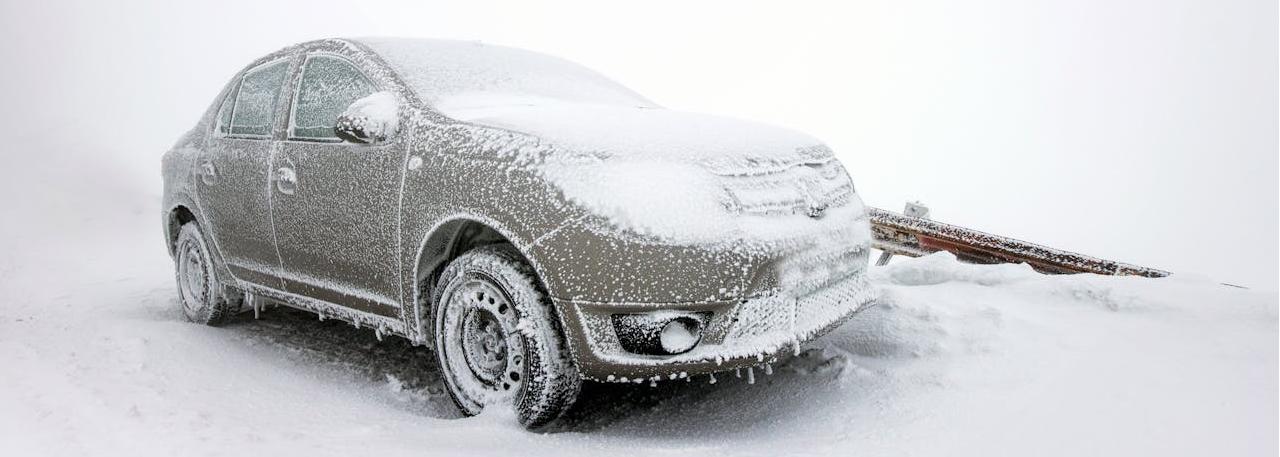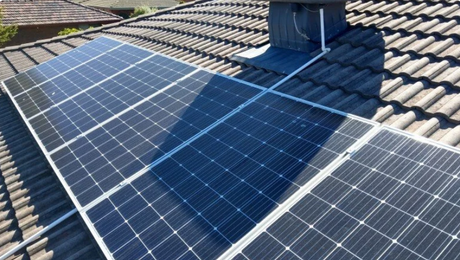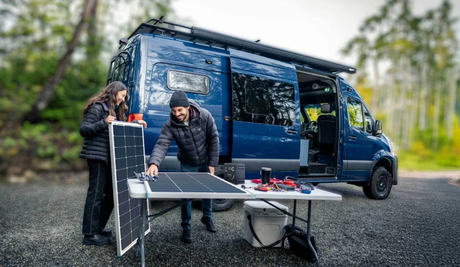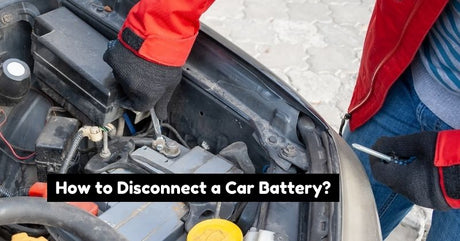Imagine you're all equipped to leave for your journey but your car battery has died and the engine refuses to turn over. This isn't rare in the cold Canadian winter.
Now you must be asking, "If car battery dies in cold will it recharge?". In short, if no damage is done and the battery is just discharged, you can recharge it through an external power source. In really low temperatures, a car battery's power weakens due to the slowing down of internal chemical reactions. This results in a no-start situation with your engine.
In this article, I will discuss practical tips for preventing car battery failure during Canadian winters and some emergency driving tips to reduce battery strain.
Why does your car battery die in winter?
Can cold weather drain a car battery? Yes, it can.
In winter, your car battery needs to deal with two things: oil and engine problems and energy loss with slowed-down chemical reactions. Extreme temperatures can drain your battery by 30-60%. Though it does recharge as you drive, for that you must go through the trouble of getting your engine going.
So, how does the low temperature drain your battery? Your car battery produces power through the electrochemical reactions happening inside of it. In cold weather, those reactions slow down which weakens your battery's power. This means it will have to work harder to turn the car's engine over. And when an already-aged battery attempts to do that, the risk of battery failure increases.
Additionally, the thickening of oil in winter and the strain on other components like the radiator and hoses both slow down your car engine causing it to require more power to start.
How to prevent your car battery from dying in winter?
A dead battery can be frustrating and expensive to replace. But don't worry, here's your guide on how to keep your car battery from dying.
1. Take regular or longer drives
Deep discharges can cause permanent damage to your battery. Therefore, it's crucial to keep it charged. When you're driving, the alternator does the job of recharging your battery. So, make sure you do not let the car sit idle in your driveway for long.
Additionally, if you take short trips it doesn't give the alternator enough time to recharge the battery. And with the extra power drawn when you start the engine short trips only do more bad than good. You must essentially drive your car at least 10 km a few times every week.
2. Park in a garage or warm area
I understand that not everyone has the facility of a garage or an underground parking area but, if you do, make sure to use it in winter. For an additional layer of protection, you can invest in a thermal wrap or a battery insulation kit. This will be helpful especially if you're parking your car outside.
3. Regular battery checks
Either check the car battery yourself or get it regularly inspected by a professional (especially throughout the winter) to learn whether your battery needs replacement or fixing. Also, ensure that the alternator is functioning as it should since a bad alternator can cause a healthy battery to drain.
4. Use a battery charger
If you can't drive your car frequently or can only go on short trips, then consider using a battery charger to prevent it from draining completely. The charger is placed under the hood and a plug hangs out from the front of your car which you can plug into a typical power outlet. As for the charger, you can go for one of the two types: trickle or tender.
What is a trickle charger?
It constantly provides small amounts of charge to a battery but doesn't know when to stop. Therefore, you will have to check if your battery has been fully charged and turn off the charger.
What is a tender charger?
Unlike a trickle charger, the tender type provides a higher charge to your battery but knows when to stop. A tender charger knows how much power your battery needs and automatically turns off once the battery is fully charged.
5. Buy a block heater
Canadian car owners can also invest in a block heater as it helps keep the engine and oil warm when the temperature consistently goes below -15°C. When the engine is warm, much less battery power is needed to start the car.
How to keep your car battery in good condition?
Sudden battery failures can leave you without power in the middle of nowhere. Though it looks sudden to us, the breakdown is usually caused by long-forgotten issues or poor maintenance. To save yourself from falling into those unexpected failure situations, follow these tips to keep your battery in good condition.
1. Check acid levels
Check your battery's acid level every six months and watch out for acid stratification. This issue arises when a battery has shallow discharges, constantly has a charge below 80%, or isn't ever fully charged.
In acid stratification, the acid concentration is high at the bottom and low on top. This can cause the charge acceptance of your battery to decline by 50-70% and increase wear and tear on the alternator.
2. Add an appropriate amount of water
While checking acid levels, if you notice exposed plates, this indicates low electrolyte. Pour in distilled water just enough to cover the plates then charge the battery.
3. Keep your car battery charged to 12.6V
12.6V is the optimal voltage for your battery's charge. If it goes below this level, your battery's lifespan and performance will decline. To check the voltage, get a voltmeter and attach its positive lead to the battery's positive terminal and negative lead to the negative terminal then wait for the reading.
4. Clean your battery regularly
Debris and dirt can accumulate on the battery over time causing the metal to corrode. You can remove the crusty bits by cleaning your battery's terminals with a baking soda and water solution. Use a hard bristle brush and equal parts baking soda and water for the mixture. Wipe off the battery well once you're done cleaning as the leftover baking soda can also be a cause of corrosion.
5. Do not overcharge your battery
Overcharging your car battery does significant internal damage, declining its lifespan. Lead and lead dioxide are crucial for a battery. And overcharging causes these materials to shed leading to a reduced battery life. When charging your car battery, it's recommended to check the progress every half an hour.
Does cold weather impact electric vehicle batteries?
Yes! Cold weather does impact EV batteries and electrical vehicles are affected by cold weather more than gas-powered vehicles as their engines are dependent on the battery for power.
Low temperatures can reduce your EV's range by 15-20% or even more as the temperature drops further. Therefore, stay on the safe side by keeping more charge in the bank than a certain distance usually requires. You can mitigate the decreasing range by warming up your EV while it's still plugged in. Additionally, cold weather may also increase your battery's charging time.
How do cold weather conditions impact hybrid vehicle batteries?
Hybrid vehicle batteries aren't immune to cold weather either. However, hybrid vehicles are impacted less by low temperatures as compared to EVs. Hybrid vehicle engines depend on both their internal combustion engine and batteries. So, when the battery's performance declines due to cold weather, the car can be switched to gas. However, one of the issues faced by hybrid car owners is reduced fuel efficiency in winter. This is because the engine runs more often to fill in for the battery's decreased capacity.
Like the electric vehicles, hybrid ones also have a preconditioning feature that warms up the battery which can help in maintaining its performance. To maximize your hybrid's performance in winter, take care of your battery's maintenance needs and try to convert short trips into longer ones so your battery can have more time to recharge.
Winter driving tips to reduce battery strain
Here are some tips to follow to reduce strain on your battery.
- Keep a tow strap with you: Are heavy snowfalls common where you're going? If yes, a tow strap will be a lifesaver. If your car gets stuck in a ditch or snow you can use a tow strap to pull it out with the help of another vehicle.
- Carry a de-icer spray and an ice scraper: An ice scraper will keep your windshield and windows away from ice and a de-icer spray can help unlock frozen door locks.
- Keep a portable jump starter: A portable jump starter will help you start your car without needing assistance from another vehicle. It comes with a lithium-ion battery that provides enough energy to start your car engine.
- Bring extra washer fluid: Washer fluid drains quickly in cold weather. Therefore, pack extra winter-grade washer fluid that is suitable for temperatures below zero degrees.
- Don't let the fuel level drop below half: A completely filled fuel tank can prevent frozen fuel lines and make sure that you have sufficient fuel for the heater to function in case you're stuck outside for long hours.
- Carry an emergency and first-aid kit: Stock your first-aid kit with necessary items like antiseptics, bandages, and any other medicine you or other passengers in the car might need. Include warm clothing, gloves, a blanket, a flashlight with extra batteries, a fully charged power bank, and non-perishable food items.
- Carry flares or reflective triangles and roadside assistance details: Flares or reflective triangles make you visible to help if stranded on the road at night or during a snowstorm. Or you can call the roadside assistance on their contact number in case of emergency.
Conclusion
Extremely cold winters can be harsh on your car battery and sometimes result in it being dead. So, if a car battery dies in winter will it recharge? If there's no internal damage, it can be recharged but the process may be slow.
To prevent your battery from dying due to cold, consider parking your car in a garage or underground parking area. Investing in a battery insulation kit or block heater can also be useful.
Also, don't just leave your car in the garage and forget about it for weeks as this can drain the battery significantly. Instead, take a few trips long enough to give the alternator time to charge your battery. Follow these tips to keep your battery from dying unexpectedly and leaving you helpless in the middle of nowhere.









